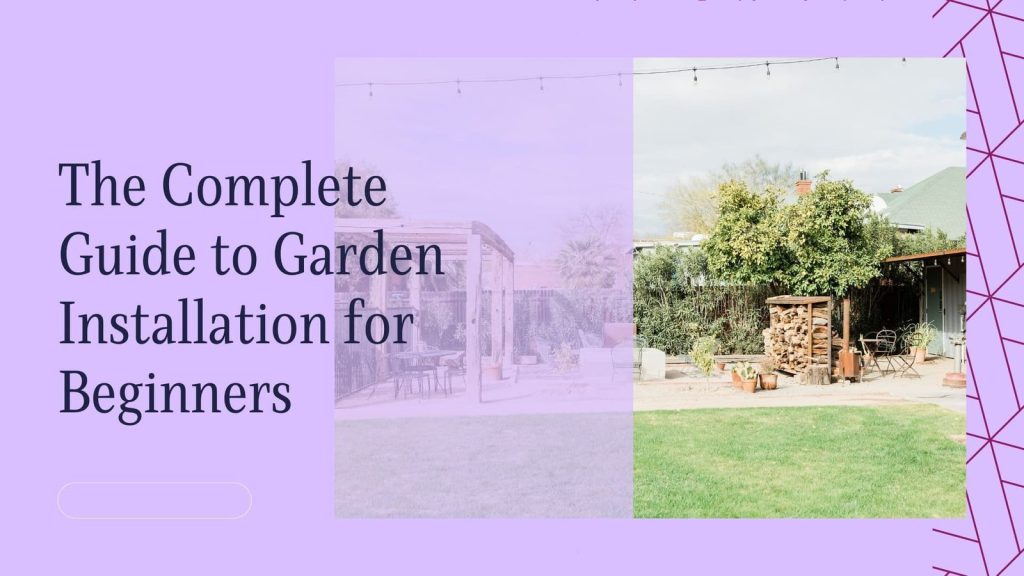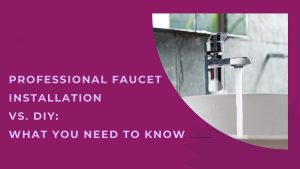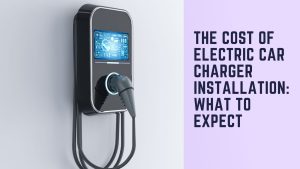In the case of gardening, proper planning is very crucial in determining the success of the process. Regardless of whether you only want to add aesthetic value to his/her backyard or develop a reliable source of food in a vegetable garden, you will benefit from learning the proper procedure of garden installation. This guide will explain to you the general installation of gardens, ranging from the selection of the site to overcoming the challenges that you are bound to encounter in the process of beginner garden installation.
What is garden installation?
Garden installation means the process of creation and construction of the garden, which can be aesthetic, practical, or ecological. They include land preparation, plant choice, placement, and incorporation of factors such as soil and mulch, and other structures such as garden furniture. Regardless of whether you choose the ‘Do it yourself method’ or hire professional garden installation services, the objective is to shape a healthy and beautiful environment conducive to the plant’s survival.
To new gardeners, setting up a garden may sound like a very hectic project, but with a few tips and the required tools, any piece of land can be developed into a garden. No matter if one needs flowers, vegetables, or both, one has to follow the tips presented in this guide to carry out the plan successfully.
Choosing the Right Location for Your Garden
Location in garden landscaping is one of the most important factors that one has to consider when designing a garden. Here’s what you should consider when choosing where to install your garden:
Sunlight Exposure: It is vital to take note that the majority of plants need at least 6 hours of direct sunlight to grow properly. To help you plan properly, take your time and notice the exposure of your yard to the sun in the morning, afternoon, and evening. Make sure you place your garden in a location that caters to the plants as per their requirements.
Soil Quality: The best soil is a must-have for the garden to be green and healthy at all times. It is important to find out the nutrients and pH level of your soil before planting so as to make the necessary adjustments. Some of them require a change of soil; you should add compost or fertilizers to enable the plants to grow in the environment you provide for them.
Water Accessibility: Make sure that your garden has a water source. Watering plants is very essential and important, especially during the initial years of their growth. Perhaps people should try drip irrigation or soaker hoses in order to properly water the plants.
Drainage: The recent floods have got much attention; they are said to have waterlogged the soil. The roots of the plants in particular are affected, causing diseases and poor growth. Ensure the particular locality you decide to have your garden in has an adequate drainage system to avoid swampy land.
Proximity to Your Home: Ideally, place your garden where it is visible from your home, thereby allowing you to check on your plants most of the time. It is also easy to have a vegetable garden if you are near the kitchen, as you can transport the vegetables easily.
Essential Tools and Materials for Garden Installation
After defining and planning an ideal garden, certain tools and elements will be required to put it up. Here’s a list of essentials:
Garden Tools: Some important tools that you may require to accomplish this are a spade, garden fork, rake, and trowel; these are used in digging, loosening soil, as well as planting. A wheelbarrow may also be useful when transporting soil, compost, and mulch from one place to another.
Compost or fertilizer: It is the equivalent of nutrient-rich compost or a good-quality fertilizer that is required to improve soil quality and Sev growth. Organic matter plays a key role in the construction of soil structure and supplies needed nutrients.
Mulch: It is used to improve the moisture content as well as the temperatures in the soil, and it suppresses the growth of weeds. Similar to inorganic mulches, organic ones, like wood chip or straws, decompose and release more nutrients to the soil as time passes.
Plants and Seeds: For any garden layout that you choose to work with, you require plants, or in some cases, seeds, to fill the garden. Select the varieties that will do well with the prevailing climate and the level of sunlight in the garden you intend to grow the plants in.
Irrigation Supplies: If you are planning on having a big garden, you may wish to have an irrigation system put into place.
Step-by-Step Garden Installation Process
Follow these steps for a smooth garden installation:
Plan Your Garden Design: Formulate general ideas of plant arrangement of the garden, lists of beds, as well as any other structures such as paths or other garden enhancements.
Prepare the soil: In most cases, this area is covered with grass, weeds, and other debris, and the first step should be to clear them. If the soil is fixed together, break it down with a spade or a garden fork and add compost or other organic materials. For raised beds, fill them with garden soil with organic compost added to it.
Mark Out the Garden Beds: With stakes and strings, it is easy to demarcate the areas that are to be used as garden beds. This means that it will assist you in maintaining the design so that there is an adequate space between different plants.
Planting: For seeds or young plants or transplants, prepare holes of a size sufficient to accommodate the root ball and place them at the depth they grew in the pots. They should then be watered adequately once they are planted.
Mulch the Garden: When the plants are put into the ground, spread a layer of mulch on the soil around them. This enables maintaining the moisture content, controlling weed infestation, and shielding the root base of the plants.
Install Irrigation: Leave spaces for the irrigation or the delivery of hoses through the lawn area for watering the plants. If you are manually watering, then make sure you fully water the garden after planting the seeds, then water the garden frequently, especially in dry weather.
Maintain the Garden: Be alert and monitor your garden; water or trim the plants and remove the unwanted growth; maybe you need to add compost or fertilizers.
Common Mistakes to Avoid During Garden Installation
While garden installation is a rewarding process, there are some common mistakes beginners should avoid:
Overcrowding Plants: It is important to avoid crowding plants so that they receive enough space, which they need for proper growth.
Planting in Poor Soil: Failure to incorporate compost or other organic matter into the soil results in a deficiency of essential nutrients, which retards plant growth.
Ignoring Sunlight Requirements: Planting flower containers with plants such as sunflowers in shaded areas will lead to poor growth and little flowering. When placing plants, it is important to place plants on the basis of their ideal environmental location.
Overwatering or Underwatering: The main thing that has to be done is maintaining regularity while watering the plants. Water overdose or shortage also poses a great threat to the plants, so always remember to cater to their needs.
Neglecting Ongoing Maintenance: Not abhorring the planting bed from weeding, pruning, or applying fertilizers is likely to leave the planting bed in bad health and the garden space messy.
Make sure you read all of the guides given above so you can plant professionally in your garden.






